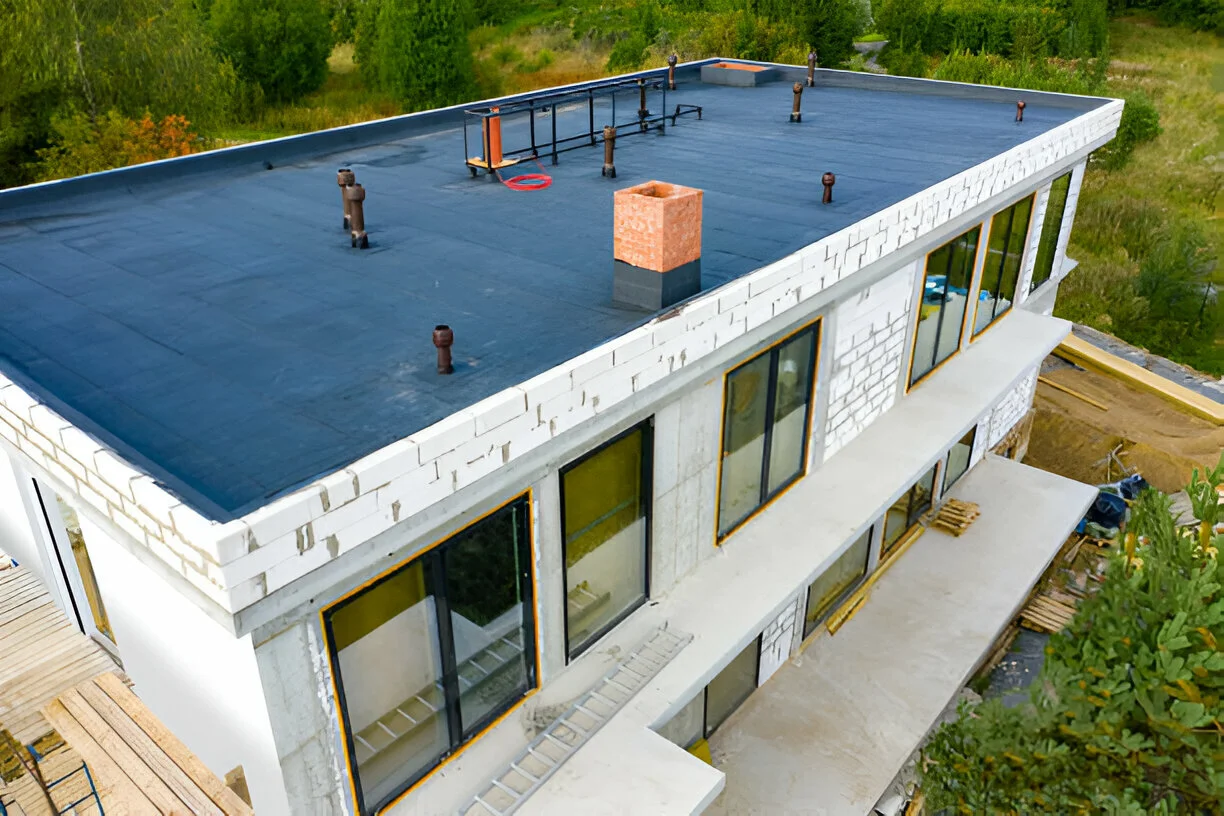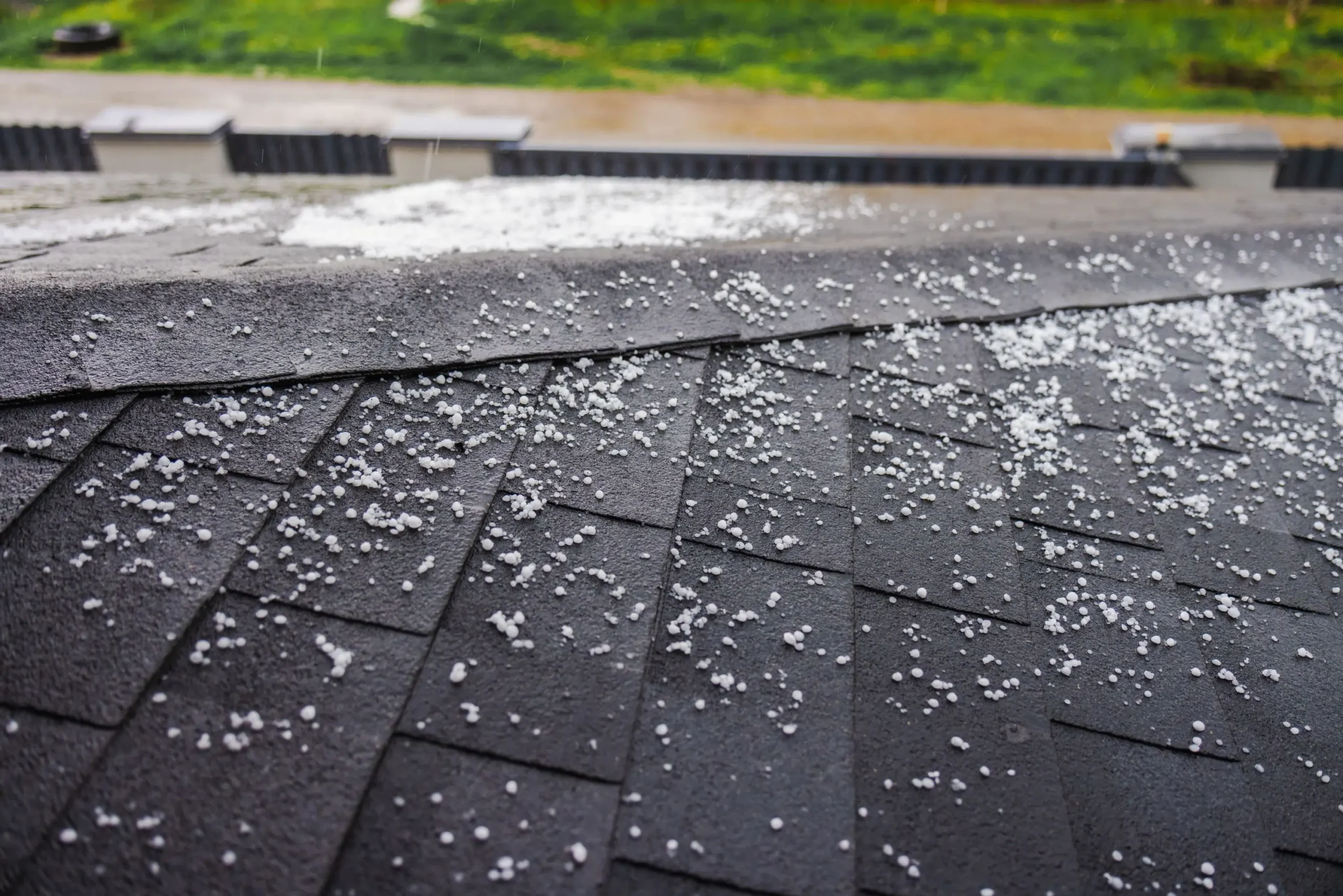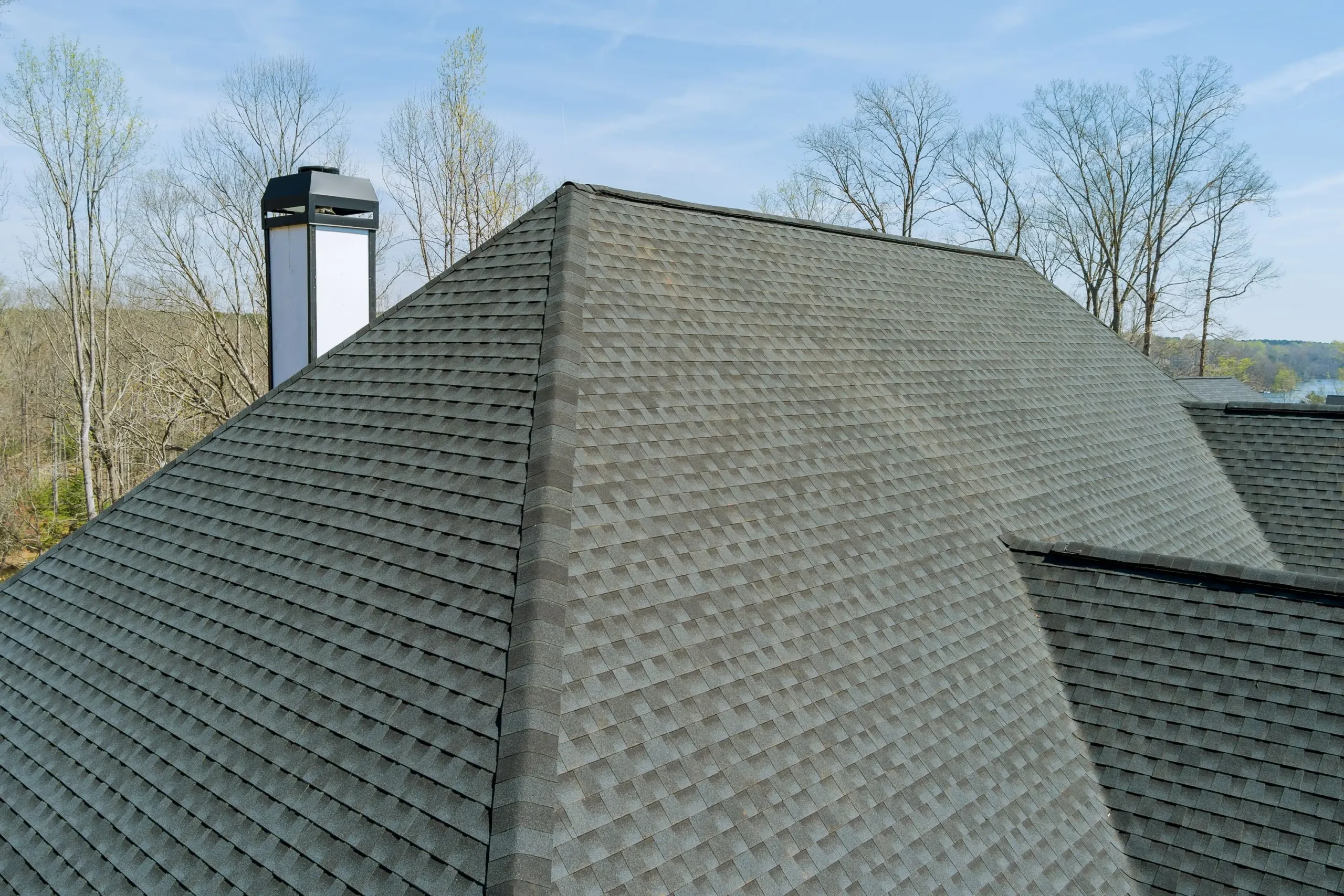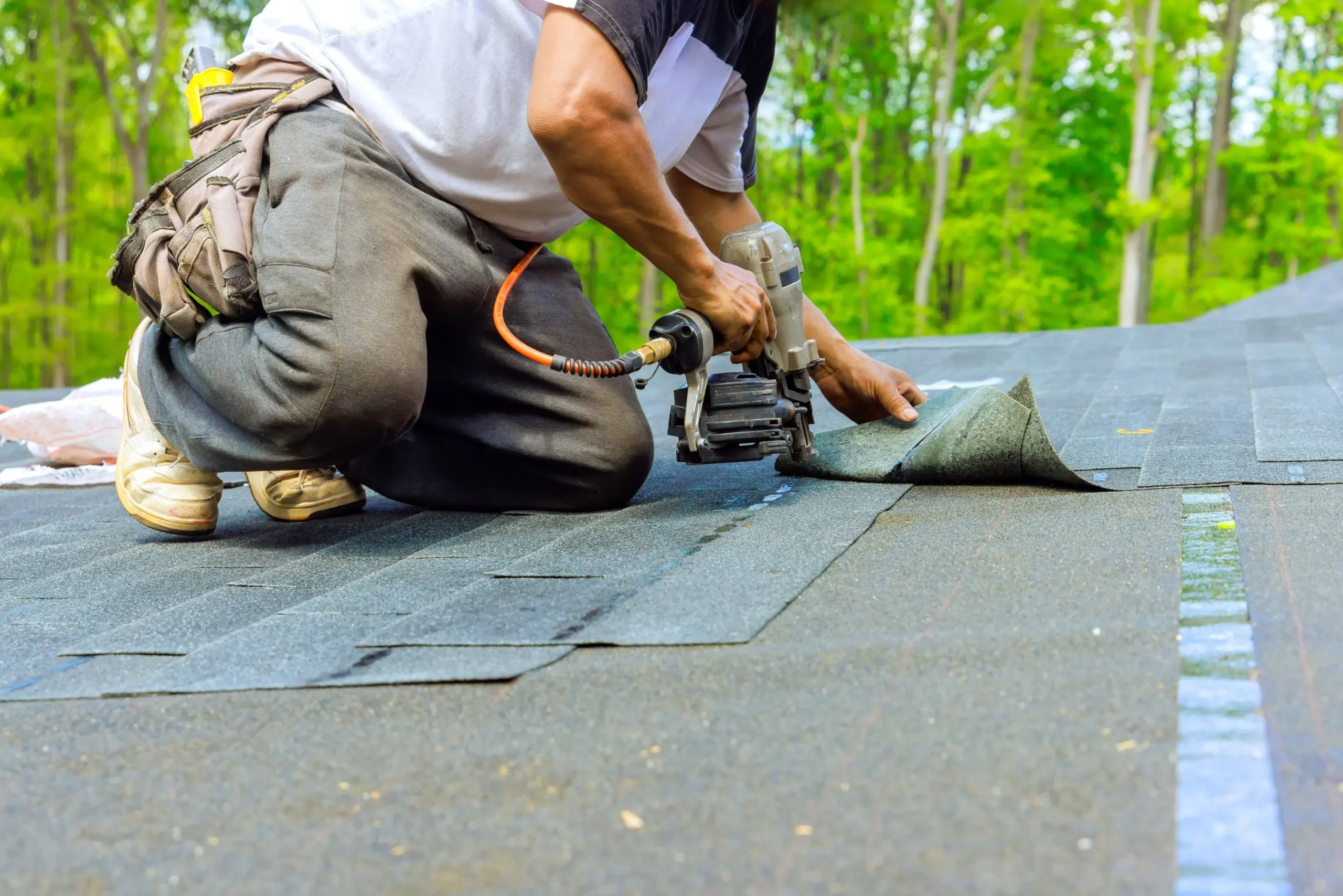The standard roof style present in commercial buildings
stems from their cost-effectiveness. It works together with their
functionality. Flat roofs require appropriate sealing methods to stop
water damage and achieve longer service life. This guide provides
instructions for flat roof sealing and introduces various roofing systems.

Why Seal a Flat Roof?
Several essential reasons exist for why flat roof sealing is necessary.
⦁ Prevents Leaks:
A sealed roof blocks water penetration which
prevents leaks from occurring.
⦁ Extends Roof Life:
The application of roof seals produces two
main advantages. It protects roofs against weather-related
damage as well as sun exposure.
⦁ Saves Energy Costs:
The building remains cooler.
This is because reflective coatings act as energy-saving solutions.
⦁ Reduces Repairs:
Thorough seal procedures help organizations prevent high
maintenance costs.
Steps to Seal a Flat Roof
The process of flat roof sealing follows a systematic approach.
Here’s how to do it:
1. Inspect the Roof
A thorough examination of the roof should happen before
sealing to identify damage cracks and leaks. Address all
issues before continuing with the work.
2. Clean the Surface
The presence of dirt along with debris prevents sealant
application. A broom brush or pressure washer should be
used to properly clean the roof surface.
3. Choose the Right Sealant
The various window and roof sealing materials cater to specific
requirements. Here are the main types:
⦁ Acrylic Sealants
provide both UV protection and building temperature reduction.
⦁ Silicone Sealants
are excellent waterproofing solutions, particularly suitable
for regions with heavy rainfall.
⦁ Bitumen-based sealants
function as a powerful waterproof barrier. It finds everyday
use in commercial roofing applications.
4. Apply Primer
A primer helps the sealant bond with the roof. Spread the product
evenly before it reaches the drying stage.
5. Apply the Sealant
Calculated application of the sealant takes place when using a
roller or brush or sprayer tool.
6. Let It Dry
Sealants need time to cure. The product instructions will guide
you to achieve optimal results.
Types of Commercial Roofing
Commercial structures implement distinct roofing materials
for their construction. Each has pros and cons.
1. Modified Bitumen Roofing
⦁ The roofing material consists of asphalt and polymers which
provide flexibility.
⦁ Resistant to extreme temperatures.
⦁ Flat roofs together with low-slope roofs benefit from this
roofing material.
2. EPDM Roofing (Rubber Roofing)
⦁ Made from synthetic rubber.
⦁ Lightweight and resistant to UV rays.
⦁ Easy to install and maintain.
4. TPO Roofing (Thermoplastic Polyolefin)
⦁ This roofing material consists of one reflective layer which reflects heat.
⦁ Energy-efficient and environmentally friendly.
⦁ A popular choice for commercial buildings.
5. PVC Roofing (Polyvinyl Chloride)
⦁ Resists fire, chemicals, and wind.
⦁ Very durable, lasting up to 30 years.
⦁ Ideal for restaurants and businesses handling grease and chemicals.
6. Metal Roofing
⦁ Long-lasting and durable.
⦁ Fire and weather-resistant.
⦁ Although designed as a single-layer membrane it can receive waterproofing.
When to Reseal a Flat Roof
Over time, sealants wear out. Wet weather conditions can reveal
the necessity to reseal your roof through specific indicators.
⦁ Cracks or Blisters:
Blisters or cracks in the roof material will eventually
result in leaks.
⦁ Pooling Water:
The presence of standing water on the roof surface indicates
problems with drainage.
⦁ Fading or Peeling Coating:
The exposure to UV rays causes the coating to fade and
peel away from the surface.
⦁ Frequent Leaks:
A roof needs resealing when leaks occur repeatedly.
Hiring Professional Flat Roofers in Calgary
Homeowners can handle flat roof sealing projects.
Yet professional assistance guarantees proper execution
of the work. Experts can:
⦁ Professional flat roofers detect problems that remain
invisible to untrained eyes.
⦁ Your roof type requires the election of the most suitable
sealant. It is according to professional recommendations.
⦁ Offer warranties for long-term protection.

Why Choose Experts?
Professional roofers possess specialized tools and expertise.
This enables them to perform better roof sealing work than
an amateur could achieve. They ensure that:
⦁ A thorough examination of the roof takes place before
the sealing process begins.
⦁ A proper sealant selection depends on the roof type
and climate conditions.
⦁ The application process runs smoothly because experts
avoid leaving any areas unattended.
⦁ The best possible environmental conditions prevail during
drying and curing processes.
Additional Flat Roof Maintenance Tips
The following steps will help you maintain your flat roof in
addition to sealing it:
⦁ Regular Inspections:
Perform inspections of the roof twice annually to
check for damage.
⦁ Clear Debris:
Clear away all leaves and dirt from the roof because
they trap moisture.
⦁ Fix Small Issues Early:
You need to handle minor roofing problems before they
transform into major issues.
⦁ Ensure Good Drainage:
The roof should have proper drainage systems to allow
water to flow away efficiently.
⦁ Use Protective Coatings:
Use protective coatings on your roof as an added
layer to lengthen its operational lifespan.
Cost of Sealing a Flat Roof
The expense of flat roof sealing depends on several
elements including:
⦁ Roof Size:
The cost increases with larger roof dimensions. This is
because it requires additional materials and a workforce.
⦁ Type of Sealant:
The selection of sealant affects both its initial price
and its lifespan duration.
⦁ Condition of the Roof:
The cost will increase when repairs must be
conducted before roof sealing.
⦁ Labor Costs:
The expense of hiring professional help for flat roof
sealing. It increases the total cost yet provides expert results.
![]()
Final Thought
The process of sealing flat roofs protects your commercial
building against water damage. It is while simultaneously
extending its operational life. The selection of appropriate roofing
systems becomes easier when you understand their different types.
Available professional services for flat roof projects deliver both extended service life
along financial savings. Your business will enjoy
protection through quality sealing investments. It extends its operational
lifespan for multiple years.
Your feedback is important to us! Please share your opinion if
this blog was useful.



